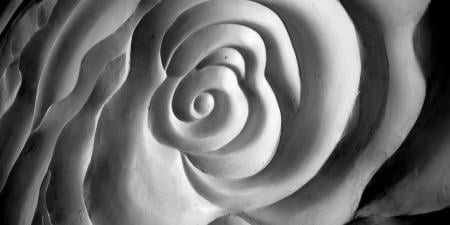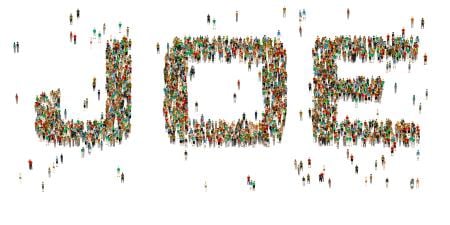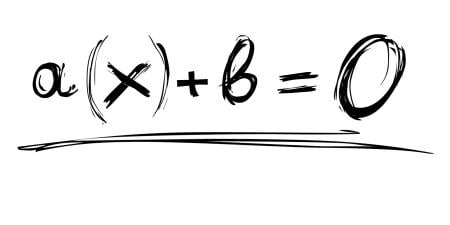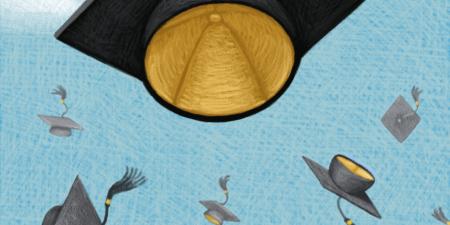Compared to the percentage of the population that has disabilities, the prevalence of physical disabilities among American medical students is low [1]. This may reflect the difficulties faced by applicants to medical programs resulting from technical standards for admission that place those with physical disabilities at a disadvantage compared to other applicants. These standards have persisted despite antidiscrimination legislation over the past 40 years, including Section 504 of the Rehabilitation Act of 1973 and the more recent Americans with Disabilities Act (ADA) [2, 3]. College students with physical disability who seek admission to American medical schools encounter policy as well as physical barriers to entry. The disconnect between the empowering language of the ADA and the technical standards for medical school admission and graduation compromises the civil rights of this particular group, which have yet to be protected the way the rights of other groups defined by gender, race, or ethnicity have been.
In the terms set out by the ADA, an “otherwise qualified” individual is entitled in employment or schooling to “reasonable accommodation” of physical limitations resulting from his or her disability. The accommodation could be relatively minimal (e.g., providing adequate lighting for someone with impaired vision or a telephone with amplification for someone with impaired hearing), but it could also involve more complex technology (e.g., specialized screen-reading software or devices). As a direct response to the stipulations of the ADA, an environment that is fully accessible for a person whose sensorimotor limitations require ambulatory assistive devices (e.g., cane, crutches, walkerette, or wheelchair) is increasingly becoming the standard for buildings, streets, and forms of public transportation. For similar reasons, it is now commonplace to encounter automatically opening doors, ramps, wheelchair-accessible rooms, adjustable patient examining tables, teletype telephone services, and elevators with auditory signals and Braille markings within modern hospitals or health care facilities, not to mention “curb cuts”—ramps connecting the street surface to the top of the sidewalk—leading into such facilities. All these environmental modifications are extremely beneficial for the many people with physical limitations.
But when a college student with disabilities hopes to become a doctor, the mandate to provide accommodation comes into conflict with society’s stereotypically high expectations of physicians and its equally low expectations of persons with disabilities. The result is an almost irreconcilable paradox: a doctor with a disability simultaneously belongs to a superior and an inferior social group [4]. Much of the focus in medicine is on incapacity rather than preserved capacity, even if some functions can be augmented. How many physicians who are not specialists in the medical care of people with disabilities would be aware that a paraplegic doctor can stand up in the operating room using a special device, that a physician whose vision precludes reading chart notes can easily access electronic medical records using screen-reading software, or that a medical student with a hearing impairment can do cardiac auscultation using an electronic stethoscope? These examples of existing technological accommodations emphasize the central role of technology in enhancing the functional potential of those with motor or sensory limitations.
We already accept supportive enhancements for “typically abled” physicians. Imagine an ophthalmologist, vascular surgeon, or hand surgeon attempting to perform microsurgery without their operating microscopes. Or consider the increasing acceptance of robotic surgical techniques, in which the robot extends the physician’s motor abilities. Similarly, use of “physician extenders,” such as nurse practitioners or physician assistants, is a support system that would also be useful for practitioners or medical students with physical disabilities. If we accept certain kinds of extenders for “typical” physicians, why would we object to physicians who need other kinds?
A recent review of the technical standards for admission set by medical schools, however, demonstrates that they have not kept pace with legislative or technological developments [5]. These standards—generally classified as observation, communication, motor abilities, intellectual/conceptual, and behavioral/social—continue to require degrees of sensory and motor function that effectively preclude many otherwise qualified applicants with physical disabilities from being considered as viable candidates. Michael Reichgott has persuasively argued that these standards are unnecessarily restrictive, given the primary importance of cognitive qualifications and the decreasing importance of physical ones in contemporary medical practice [6].
These rigid standards arise from the ideal of the “undifferentiated physician,” with its assumption that all medical school graduates should be capable of entering any medical specialty upon completion of their education [7]. Given the wide range of personality types of graduates, this concept appears unrealistically stringent even for fully abled students. Personality traits alone mean the student who would likely excel as a psychiatrist might be unsuitable for the high-pressure environment of surgery or emergency medicine and vice versa. David Hartman, who has criticized the “undifferentiated physician” concept, emphasizes that knowing the limitations of one’s own expertise is at least as important as feeling prepared to function in any or all specialty areas [7]. Since the “undifferentiated physician” is already a goal that cannot be met, excluding potential doctors on the basis that their limitations would make them ill-suited for some specialties makes little sense.
Students with disabilities might even have advantages that the “typical” physician does not. Joel De Lisa has provided the most recent and most comprehensive overview of the subject of medical school applicants, medical students, and physicians with physical disabilities [1]. His analyses of the evolution of technical standards and review of pertinent legal cases are particularly enlightening. He includes ten specific recommendations that warrant future study and re-evaluation of current admission policies. Finally, he points out that a student with a disability possesses an insider’s view of the experience of what can be termed “patienthood” and can offer a depth of empathy that would strengthen the doctor-patient relationship at the center of the medical profession. All of this points to one conclusion: there is no good reason to bar entry to medical school on the basis of physical disability.
It should be emphasized that the terms disability and inability are by no means synonymous; the former term indicates only a difficulty in performing physical tasks. Howard Rusk [8] has encapsulated this idea vividly by describing rehabilitation as a process by which a person learns to live not just within the limits of his disability but also to the hilt of his ability.
References
- DeLisa JA, Thomas P. Physicians with disabilities and the physician workforce: a need to reassess our policies. Am J Phys Med Rehabil. 2005;84(1):5-11.
-
Americans with Disabilities Act, 42 USC sections 12101-12213 (1990).
-
Americans with Disabilities Act, 47 USC sections 225, 611 (1990).
-
Lewis SB. The physically handicapped physician. In: Callan JP, ed. The Physician: A Professional under Stress. Norwalk, CT: Appleton-Century-Crofts; 1983:318-326.
-
This is easily done by Googling “technical standards for admission to medical school.” The standards for most medical schools are available on the Internet, and uniformly include the ability to observe required demonstrations and experiments and to communicate with patients in speech and writing; sufficient motor function to carry out the basic laboratory techniques and to elicit diagnostic information through palpation, auscultation, percussion, to perform dissection of a human cadaver, to use a microscope, and so on.
- Reichgott MJ. “Without handicap”: issues of medical schools and physically disabled students. Acad Med. 1996;71(7):724-729.
- Hartman DW, Hartman CW. Disabled students and medical school admissions. Arch Phys Med Rehabil. 1981;62(2):90-91.
-
Rusk HA. A World to Care For: The Autobiography of Howard A. Rusk, MD. New York, NY: Random House; 1972.



